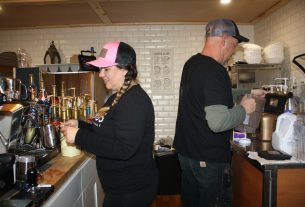Pakistan, once again, has been hit by devastating floods that have displaced thousands, disrupted livelihoods, and highlighted the country’s acute vulnerability to climate change, even as many are still recovering from the floods of 2022.
For financial service providers (FSPs) working with low-income communities, such crises underscore an urgent question: how can they build their own resilience in the face of increasingly frequent climate shocks while continuing to deliver much-needed financial services to their climate-vulnerable customers?
Our earlier post shared survey findings from Pakistan pointing to climate risks as a real driver of financial exclusion, with early evidence suggesting that some FSPs have even pulled back lending in particular sectors and geographies as a response.
But this doesn’t have to be the case. Here, we share three key lessons in resilience from Pakistan’s microfinance sector to help other microfinance institutions (MFIs) avoid climate change undermining their operations and commitment to driving financial inclusion.
1. Prioritize risk assessment and management
Rather than retreat, FSPs must re-engineer their approach; addressing customer risks as part of the MFI’s risk management is a good place to start.
Lending in high-risk regions needs to be accompanied by customer adaptation and resilience-building measures. Without these, both the FSP and its clients face heightened exposure to defaults and losses in the aftermath of disasters.
For institutions such as SAFCO Microfinance Company (SAFCO) – a Pakistan-based financial institution that provides loans, digital micro-savings (currently being piloted), and emerging resilience products to low-income communities – their clients are overwhelmingly rural and depend on agriculture and informal livelihoods that are highly exposed to climate risks. Erratic rainfall, heatwaves, water scarcity, and flooding directly threaten their income and assets. These same risks also put pressure on FSPs’ own operations, forcing them to rethink how and where they lend, and at what price.
For FSPs, incorporating customer risks needs to go beyond product tweaks. It requires a shift in institutional mindset. Physical climate risk assessments can be a strategic asset for an institution, providing product and client teams with insights that can be translated into solutions that support resilience rather than exclusion. In practice, this means embedding climate considerations into governance, risk management, and product design simultaneously, and ensuring accountability across the institution.
2. Revisit existing products to meet changing client needs
Tweaking or enhancing existing products can turn financial inclusion into a tool for climate resilience.
SAFCO, for example, is working on climate-buffer financial products, which are solutions designed to absorb risk, such as agriculture and livelihood, disaster-related, and institutional and systemic risk. Solutions include integrating insurance into loan packages, piloting blended finance models for risk pooling, and exploring public-private partnerships (PPP) that combine resources to strengthen resilience. Pilots for crop and livestock insurance bundles, agricultural loans, and disaster-sensitive loans with flexible repayment terms have already shown encouraging results – clients were better able to recover from shocks without falling into over-indebtedness, while SAFCO observed reduced repayment stress and improved collection performance.
These early learnings also strengthen the case for scaling. As a member of Pakistan’s consultative group on microinsurance, SAFCO is in discussion with regulators to establish its own microinsurance company within the next 5–10 years. The vision is to develop an ecosystem that will enable tailored product development, affordable pricing structures, and innovative PPP. Such a move would contribute to deepening the penetration of microinsurance in Pakistan’s financial sector.
Another climate buffer and broader resilience product category that FSPs should consider is savings. This can be approached in a different way than standard savings products. SAFCO’s piloted micro-savings product includes key features such as emergency-access savings and behavioural nudges, which encourage clients to set aside small amounts through a digital channel regularly. With support from telecom partners, clients will be able to withdraw cash from existing local agents using their phones – an important innovation in regions where traditional banking infrastructure is sparse. The micro-savings product also acts as a deliberate climate-buffered financial tool to help them prepare and recover accordingly, given the 2022 floods showed that when entire households were swept away, savings kept at home proved insufficient and unsafe.
Starting with practical, small product tweaks and pilots in this way, such as bundled insurance and micro-savings, can directly strengthen client safety nets during climate disasters and set an FSP up well to scale.
External support is key
Our work in Pakistan also highlights that FSPs cannot face climate risks alone. Disasters often cause repayment rates to plummet, leaving FSPs with liquidity shortages just when their clients need them most. Additional support is therefore needed from funders, regulators, and the government. This includes:
- Policy and regulatory frameworks that create risk-sharing facilities and disaster support pools accessible to FSPs. An example of this is the UNCDF’s Pacific Insurance and Climate Adaptation Programme, which has been instrumental in piloting parametric microinsurance products tailored for Pacific Island communities, focusing on sectors such as agriculture, fisheries, and tourism. The program’s success underscores the importance of collaborative efforts between governments, development partners, and the private sector in creating inclusive disaster risk financing solutions.
- Liquidity facilities that provide immediate relief when borrower repayments collapse after a flood or drought. A good example of this support is the World Bank’s Resilient and Accessible Microfinance project in Pakistan, which links emergency liquidity directly to FSPs’ ability to keep lending through crises, ensuring clients are not cut off when they need finance most.
- Technical assistance (TA) to design and scale climate-resilient products, from bundled insurance to recovery lending and micro-savings. In SAFCO’s case, receiving TA from Oxfam Novib, Blue Orchard (MIFA), and FMO helped their development of climate resilience products and services, risk management, governance, and digital transformation.
CGAP’s report on Strengthening Financial Systems for Climate Adaptation provides a deeper analysis of the wider external support required for FSPs to build their resilience to climate shocks.
A call to action
The flash floods across Pakistan are a stark reminder of the “big picture” climate challenges the country, and others that are on the frontlines of climate change, must prepare for – not only to protect low-income households, but also to ensure that the FSPs serving them can continue to do so. Low-income households are the first to be hit by climate shocks and the last to recover, and while FSPs are innovating under pressure, their efforts need an enabling environment. Funders, regulators, and policymakers have a critical role to play in creating this.
The experience of SAFCO shows that, with the right regulatory support and partnerships, MFIs can become frontline actors in climate adaptation, ensuring both client protection and institutional sustainability.



